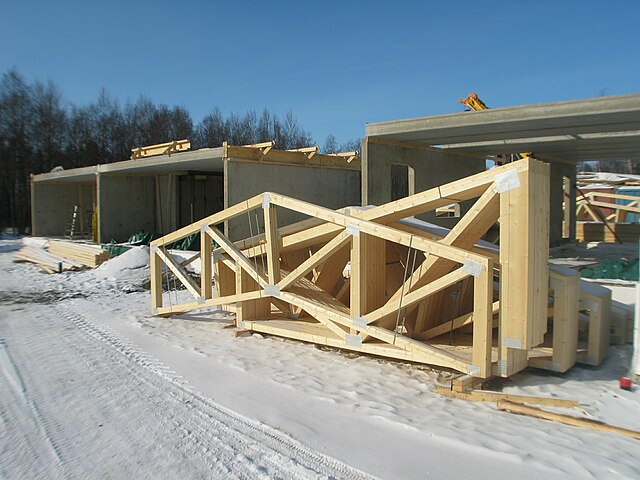A Brown truss is a type of bridge truss, used in covered bridges. It is noted for its economical use of materials and is named after the inventor, Josiah Brown Jr., of Buffalo, New York, who patented it July 7, 1857, as US patent 17,722.
Whites Bridge interior showing diagonal members on sides and horizontal diagonal roof support, forming the top of the box truss
Whites Bridge underside, showing floor supports pinned to side (diagonal) truss members. Bottom of diagonal truss members protrude below the sheathing.
Ada Covered Bridge looking upward. Truss member ends can be seen protruding below sheathing. Very top of truss is visible above sheathing gap below roofline. This gap admitted light, making the bridge interior usable, if somewhat dark.
Bottom of diagonal truss members interlock with floor (Fallasburg Bridge)
A truss is an assembly of members such as beams, connected by nodes, that creates a rigid structure.
Truss bridge for a single-track railway, converted to pedestrian use and pipeline support. In this example the truss is a group of triangular units supporting the bridge.
Historical detail of a steel truss with an actual revolute joint
Planar roof trusses
The roof trusses of the Basilica di Santa Croce in Florence








